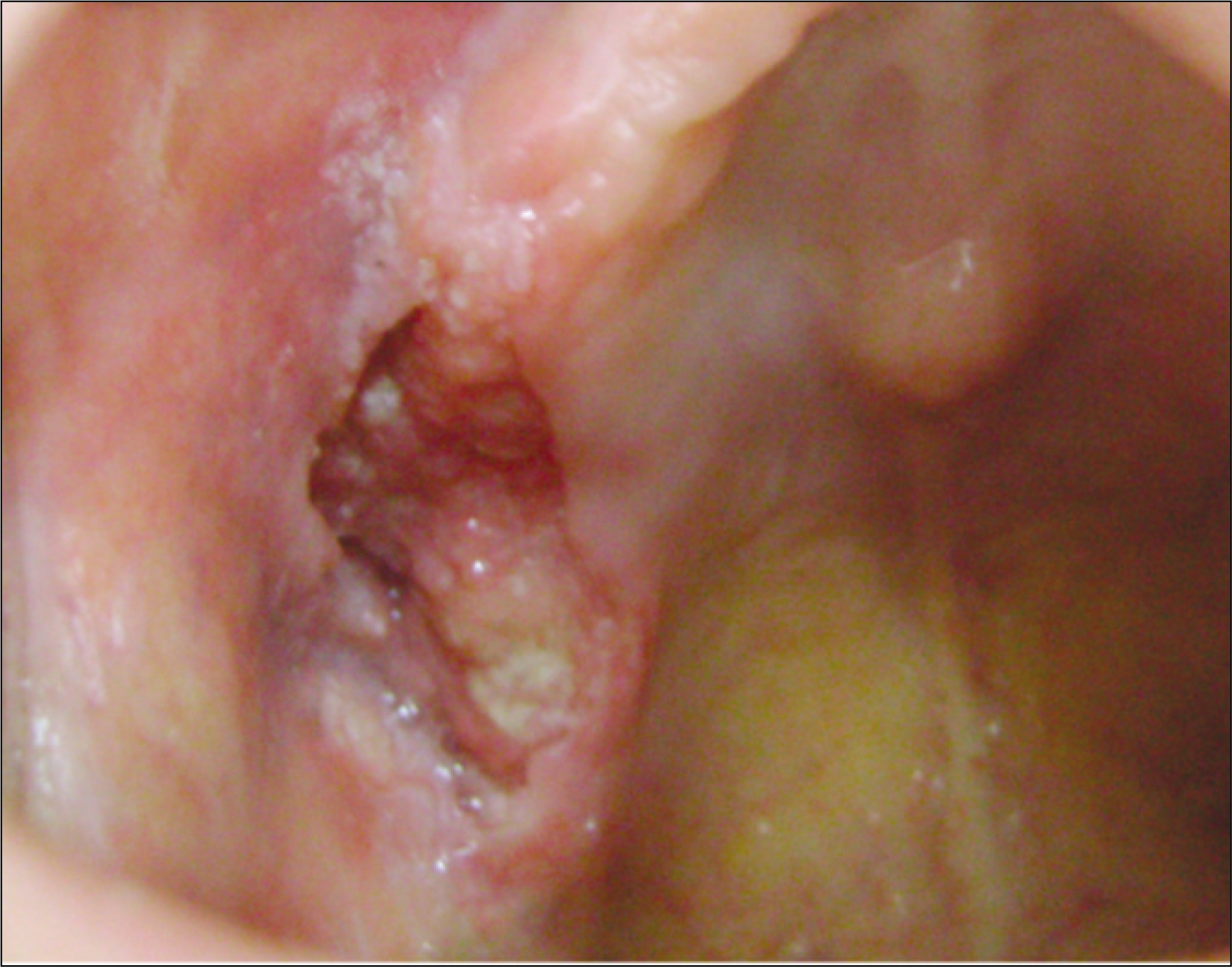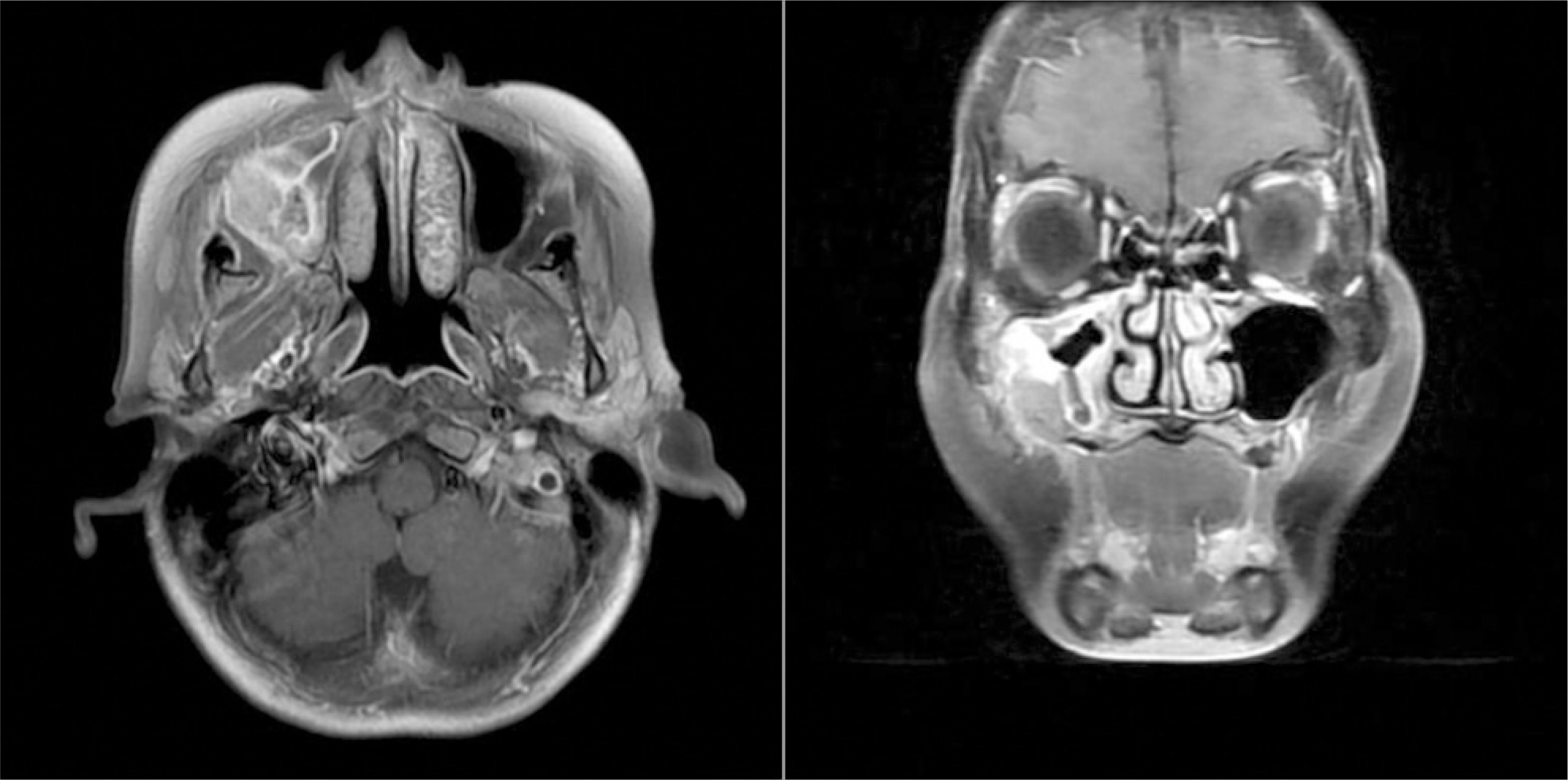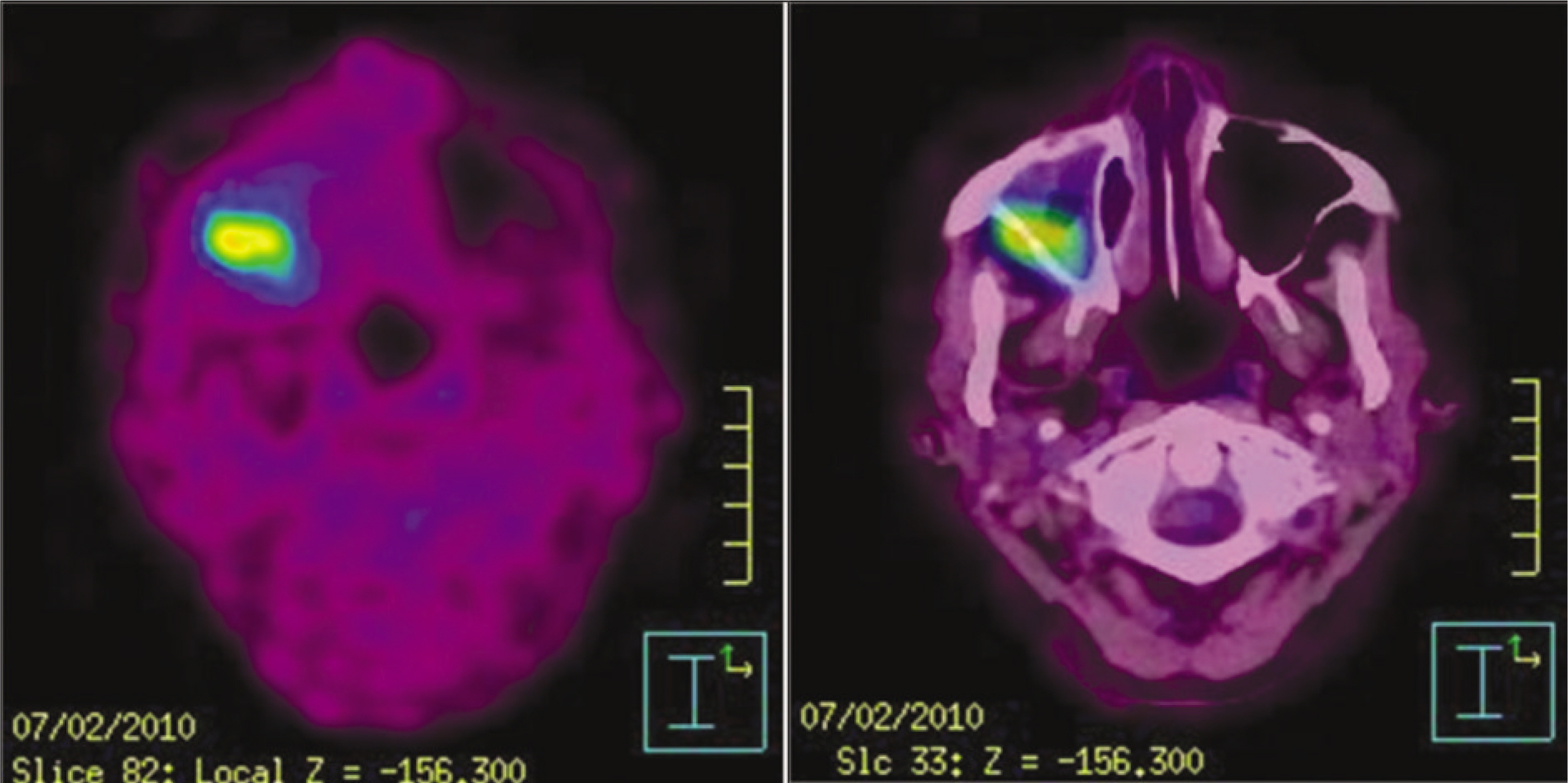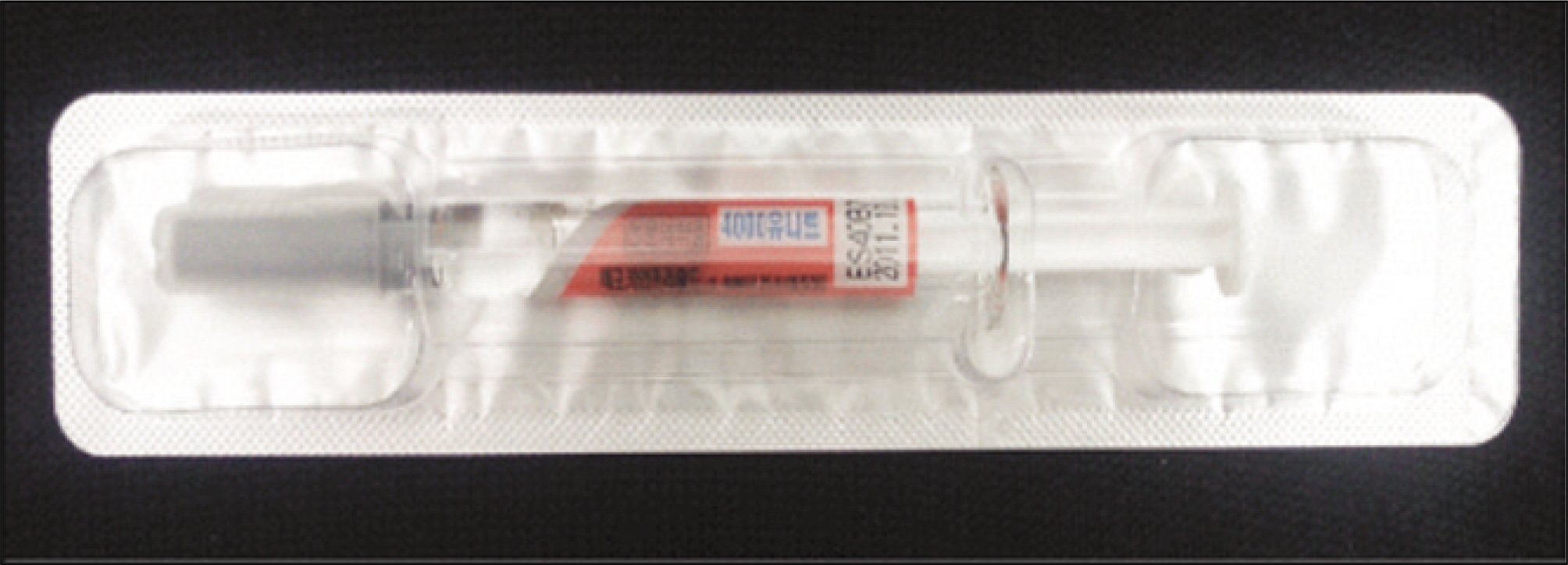J Korean Assoc Oral Maxillofac Surg.
2011 Feb;37(1):9-14. 10.5125/jkaoms.2011.37.1.9.
Oral cancer resection and reconstruction without blood transfusion by using recombinant human erythropoietin
- Affiliations
-
- 1Department of Oral and Maxillofacial Surgery, College of Dentistry, Dankook University, Choenan, Korea. kimchoms@dankook.ac.kr
- KMID: 2189800
- DOI: http://doi.org/10.5125/jkaoms.2011.37.1.9
Abstract
- Recently, the population of patients who refuse transfusion has increased for both religious and non-religious reasons, even in life threatening emergency situations. Their refusal has highlighted the need to develop nonblood transfusion surgery techniques to decrease the risk from blood transfusions. A 57-year woman with an ulcerative lesion on the gingiva of the right upper molar area visited the department of oral and maxillofacial surgery in Dankook University Dental Hospital. After a preliminary evaluation, the patient was diagnosed with squamous cell carcinoma. As she refused blood transfusion during surgery for religious reasons, surgery was planned using recombinant human erythropoietin (rHuEPO) without a blood transfusion. The patient underwent a partial maxillectomy, supraomohyoid neck dissection, free radial forearm flap and split thickness skin graft under general anesthesia. rHuEPO and iron were used before and after surgery. The hemoglobin/hematocrit (Hb/Hct) level, iron (Fe) and total iron-binding capacity (TIBC) were assessed. The patient recovered completely without any blood transfusions. rHuEPO is a viable alternative for patients with religious objections to receiving blood transfusions.
MeSH Terms
Figure
Reference
-
References
1. Pelis K. Blood clots: the nineteenth-century debate over the substance and means of transfusion in Britain. Ann Sci. 1997; 54:331–60.
Article2. Goodnough LT, Shander A, Spence R. Bloodless medicine: clinical care without allogeneic blood transfusion. Transfusion. 2003; 43:668–76.
Article3. Boldt J, Weber A, Mailer K, Papsdorf M, Schuster P. Acute nor-movolaemic haemodilution vs controlled hypotension for reducing the use of allogeneic blood in patients undergoing radical prostatectomy. Br J Anaesth. 1999; 82:170–4.
Article4. Scho¨nhofer B, Wenzel M, Geibel M, Haidl P, Ko¨hler D. Anemia increases work of breathing in patients with lung disease. Med Klin (Munich). 1997; 92(Suppl 1):108–10.5. Goodnough LT, Shander A, Brecher ME. Transfusion medicine: looking to the future. Lancet. 2003; 361:161–9.
Article6. Corwin HL. Blood transfusion: first, do no harm! Chest. 1999; 116:1149–50.7. Spahn DR, Casutt M. Eliminating blood transfusions: new aspects and perspectives. Anesthesiology. 2000; 93:242–55.8. Doyle DJ. Blood transfusions and the Jehovah's Witness patient. Am J Ther. 2002; 9:417–24.
Article9. Sacks DA, Koppes RH. Blood transfusion and Jehovah's Witnesses: medical and legal issues in obstetrics and gynecology. Am J Obstet Gynecol. 1986; 154:483–6.
Article10. Goodnough LT, Monk TG, Brecher ME. Acute normovolemic hemodilution should replace the preoperative donation of autologous blood as a method of autologous-blood procurement. Transfusion. 1998; 38:473–6.
Article11. Marsh JC, Bevan DH. Haematological care of the Jehovah's Witness patient. Br J Haematol. 2002; 119:25–37.
Article12. Goodnough LT, Brittenham GM. Limitations of the erythropoietic response to serial phlebotomy: implications for autologous blood donor programs. J Lab Clin Med. 1990; 115:28–35.13. Goodnough LT, Verbrugge D, Marcus RE, Goldberg V. The effect of patient size and dose of recombinant human erythropoietin therapy on red blood cell volume expansion in autologous blood donors for elective orthopedic operation. J Am Coll Surg. 1994; 179:171–6.
Article14. Goodnough LT, Skikne B, Brugnara C. Erythropoietin, iron, and erythropoiesis. Blood. 2000; 96:823–33.
Article15. Coleman TR, Westenfelder C, To¨gel FE, Yang Y, Hu Z, Swenson L, et al. Cytoprotective doses of erythropoietin or carbamylated erythropoietin have markedly different procoagulant and vasoactive activities. Proc Natl Acad Sci U S A. 2006; 103:5965–70.
Article16. Levy JH, Bailey JM, Salmenpera¨ M. Pharmacokinetics of aprotinin in preoperative cardiac surgical patients. Anesthesiology. 1994; 80:1013–8.
Article17. Riess JG. Perfluorocarbon-based oxygen delivery. Artif Cells Blood Substit Immobil Biotechnol. 2006; 34:567–80.
Article18. Jaskolka M. Politano N, Lewallen B, White R, Phillips C. The impact of preoperative erythropoietin on recovery after orthognathic surgery. J Oral Maxillofac Surg. 2010; 68(9 Suppl 1):9–10.19. Politano NA. Jaskolka M, Lewallen B, White R, Phillips C. The effect of preoperative recombinant erythropoietin and type of surgical procedure on postoperative hematocrit following orthognathic surgery. J Oral Maxillofac Surg. 2009; 67(9 Suppl 1):28–9.
- Full Text Links
- Actions
-
Cited
- CITED
-
- Close
- Share
- Similar articles
-
- Prebanked Autologous Transfusion using Recombinant Human Erythropoietin: Report of one case
- Effect of Recombinant Human Erythropoietin in the Anemia of Prematurity : a Pilot Study
- Erythropoietin Therapy and Autologous Cord Blood Transfusion for Anemia of Prematurity
- Blood Management Protocol without Transfusion in Orthopedic Surgery
- Effects of recombinant human erythropoietin therapy in hemodialysis patient






